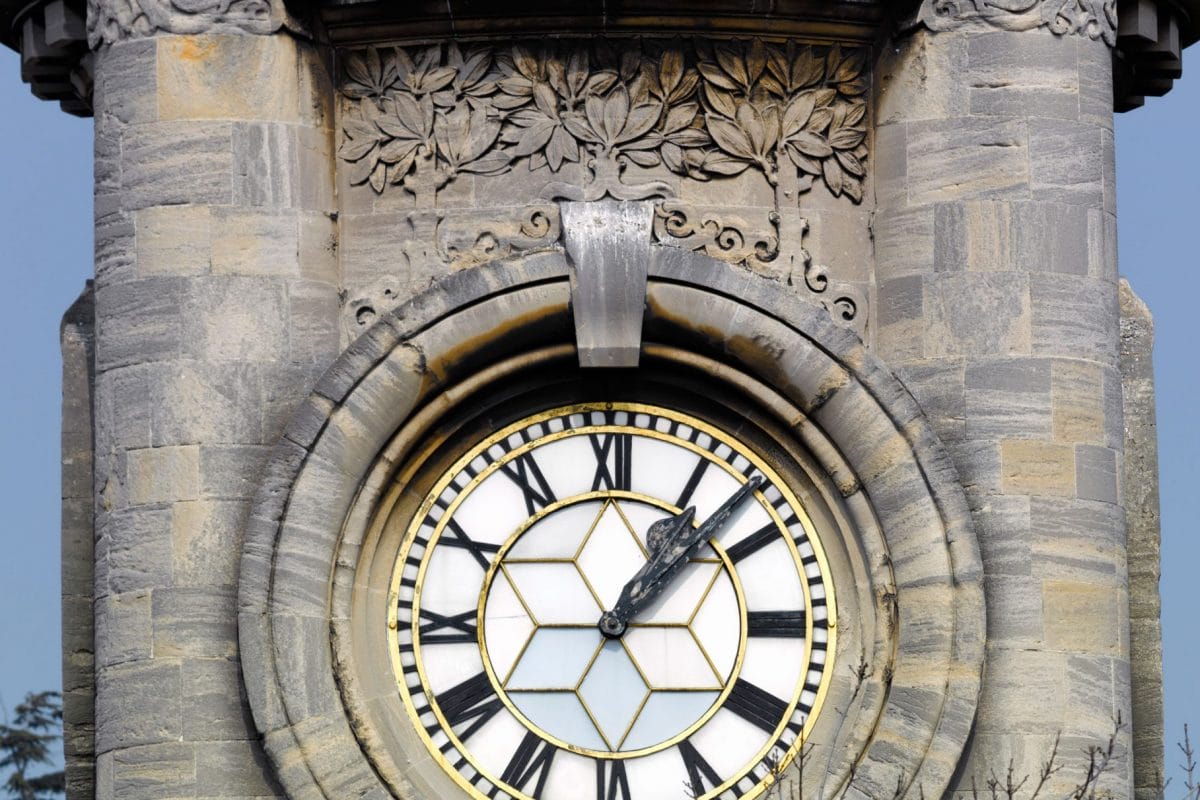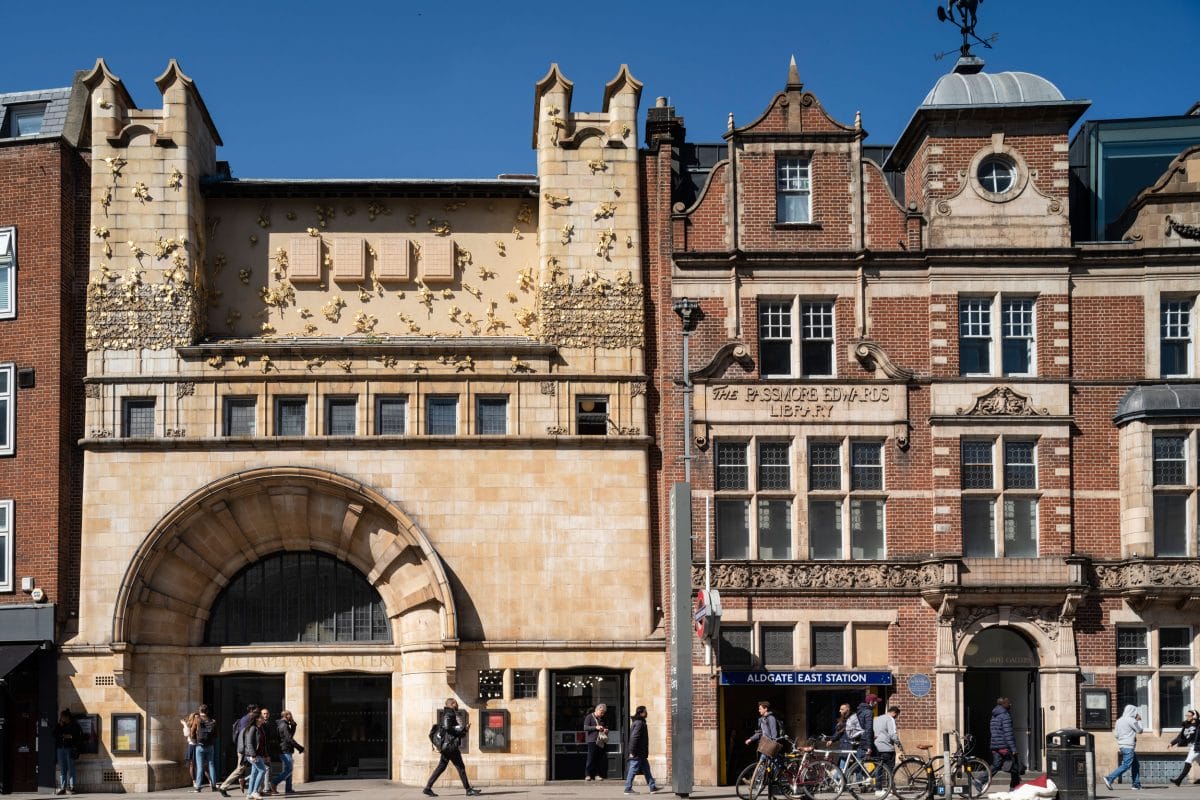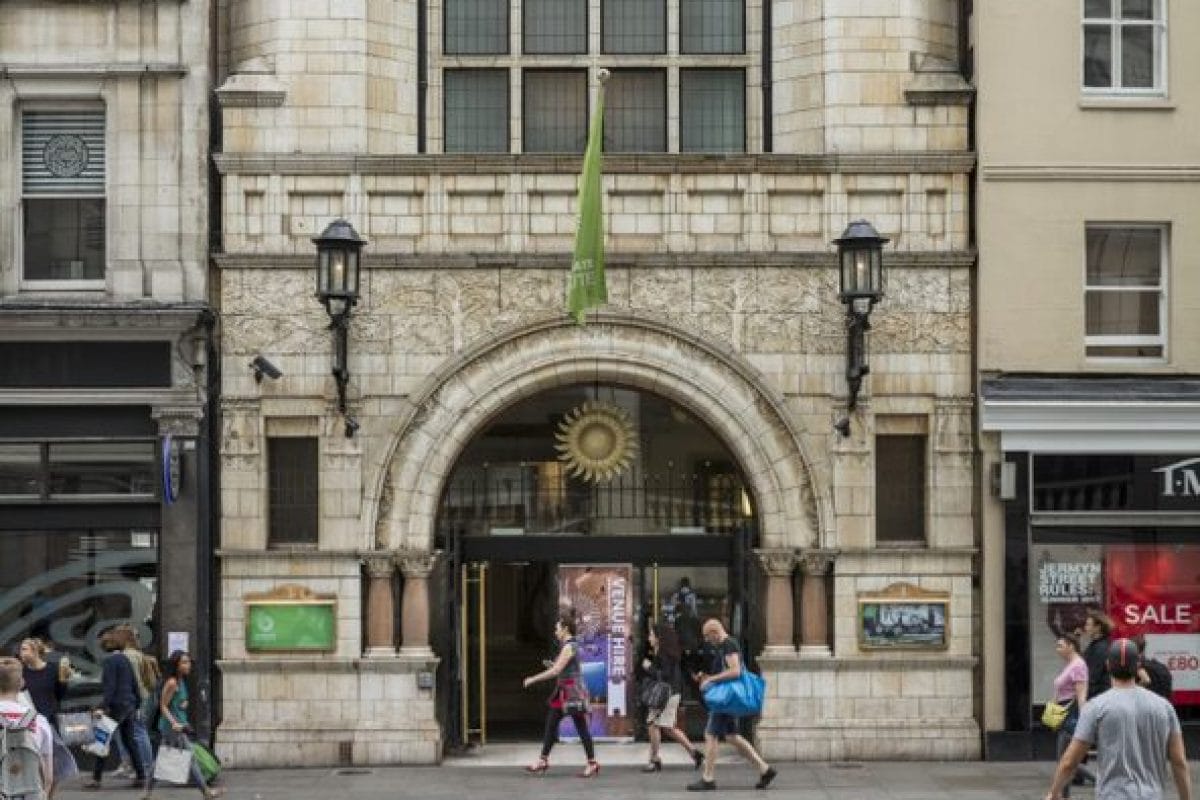Have you ever noticed the decoration around the top of the Horniman Clocktower? Our London landmark has trees growing out of the clock. If you venture inside you may have also noticed the decorations on the walls of the World Gallery Balcony, which also feature trees with big clusters of grapes or berries.
Fans of Charles Harrison Townsend will also be familiar with the Bishopsgate Institute and the Whitechapel Gallery, both of which also feature trees in the exterior of their architecture.
In the case of the Whitechapel Gallery, this decoration was added to more recently by Rachel Whiteread in her sculpture, called Tree of Life.
So why did trees feature so prominently on Townsends designs?
Trees are at the heart of creation stories. The tree of knowledge of good and evil in the Garden of Eden. Yggdrasil, the tree which spreads through the nine worlds in Norse myths. The divine trees known as Kalpavriksha, which grants wishes in Hindu and Buddhist literature, as well as Jainism and Sikhism.
Trees are present in folklore too, signifying rebirth or beginning anew after the winter. The Green Man frequently crops up in architecture in Britain, as a face looking out from, or made up of, leaves. You are just as likely to run into him on a church as a pub, so widespread is this nod to pagan fertility.
Art (and crafts) for the people
Townsend was part of the Arts and Crafts movement in the 19th century. Artists, architects, and the like within the movement, sought to bring out the inherent beauty of natural materials, placing nature at the heart of their works.
The mass production bought about by industrialisation prompted a reaction from artists, who believed there was a decline in standards, combined with a perceived “vulgarity of detail” in the Great Exhibition of 1851.
Craftsmanship and working conditions were being lost to profit, and creations made by machine were seen by many in the arts and crafts movement, as soulless and dehumanising.
The movement really came into its own with figures like William Morris, who was involved in the whole process of creating from design to manufacture, and John Ruskin, who “related the moral and social health of a nation to the qualities of its architecture and to the nature of its work.”
Townsend lived with his older sister Pauline, who worked for Samuel and Henrietta Barnett, the founders of the Whitechapel Gallery. The Barnetts were social reformers along with their friends like Octavia Hill, who campaigned for the availability of open spaces for poor people, and was one of the founders of the National Trust.
This relationship between designers like Townsend and Morris with reformers like Hill and Ruskin placed the working classes as central to the arts and crafts movement. Rebecca D Pollack wrote in Museums and Public Art? about the Whitechapel Gallery:
The Arts and Crafts movement, popular at the turn into the twentieth century, also carried political connotations… this movement exemplified the Barnett’s principle of “Art for the People” in that it elevated craftspeople and the working class, promoting equality in order to enhance the quality of life and art for all.
It is not a coincidence that all three buildings – the Horniman, the Whitechapel Gallery and the Bishopsgate Institute – were founded with the values of bringing the arts, culture and science to the public, and making exhibitions and displays free to be accessible for all.
Symbolism in architecture
Sarah Sullivan, a researcher of Charles Harrison Townsend, believes he was influenced by W. R. Lethaby’s Architecture, Mysticism and Myth, according to this biography by Jacqueline Banerjee.
Lethaby’s book focused on a system of symbolism within architecture that have identifiable philosophical meanings, rather than just aesthetically pleasing structures.
He advocated a cosmic symbolism, in which the Tree of Life is both a symbol of the universe and a basic form of building construction.
So it is likely that Tree of Life appearing across all three institutions, signals that the knowledge within was universal.
The art, literature, science and culture available through the doors was – and remains – accessible to all equally, and like the tree, allows visitors to grow and flourish.
Learn more about Charles Harrison Townsend, and next time you visit the Horniman, Whitechapel Gallery or Bishopsgate Institute, have a look for these trees on our buildings.








